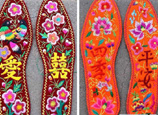
Pricing power
The net interest margin at Bank of China rose 0.02 percentage point to 2.12 percent at the end of September. Agriculture Bank's margin dipped 0.03 percentage point to 2.82 percent, but the bank still has the highest margin among the five lenders due to its pricing power in rural areas, according to Jiang Chaoliang, chairman of AgBank.
"Currently 40 percent of our deposits and over 30 percent of our loans come from rural business, which keeps our net interest income at a more favorable level than our peers," Jiang told the media last week during the 18th National Congress of the Communist Party of China. "We have benefited from our strength in rural areas."
The net interest margin at the Bank of Communications slipped to 2.60 percent in the third quarter from 2.61 percent in the second. However, it could have been worse.
"Thanks to our thriving credit card business, the net interest margin did not contract much," Qian Wenhui, vice president of the bank, said at a conference last month. "Business in the middle and western regions and small business loans were promising, improving our credit structure and stabilizing our net interest margin. Price management is the key."
In addition to deregulation of interest rates, the big lenders also face fiercer competition from other financial institutions that may force them to provide greater discounts to a bigger group of customers, said S&P.
At the end of 2011, banks priced only 7 percent of new loans below the benchmark rate, but the proportion is expected to rise to 20 percent by the end of 2013, according to the agency.
For the biggest lenders, aggressive expansion since 2008 was fueled by heavy national investment. That strategy is undergoing changes as the central government is now placing grater emphasis on what it calls "quality growth" over just fast expansion.
















 Landmark building should respect the public's feeling
Landmark building should respect the public's feeling


![]()
